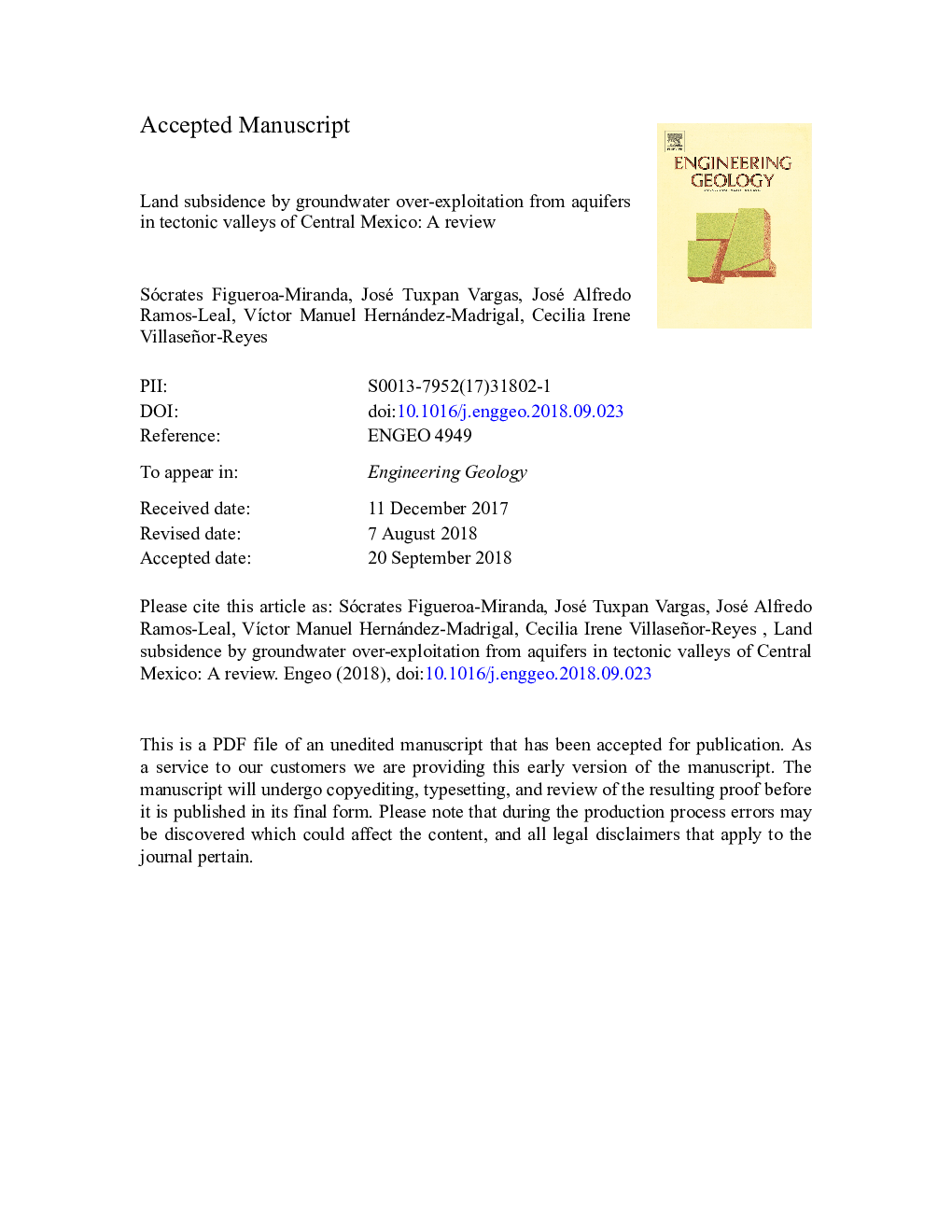| Article ID | Journal | Published Year | Pages | File Type |
|---|---|---|---|---|
| 11017648 | Engineering Geology | 2018 | 58 Pages |
Abstract
Structurally-Controlled Differential Subsidence (SCDS) is the gradual sinking of the ground, characterized by the development of a damage band, terrain discontinuities and collapses, aligned according to the strike of a controlling geological structure. SCDS has been reported since the 1980s in several cities settled on tectonic valleys in central Mexico. Although groundwater abstraction is the main trigger, recent research efforts also point-out a tectonic component as a driving force. The monitoring and quantification of SCDS has been done through a variety of techniques, such as extensometry, GPS and InSAR. Furthermore, the associated hazards endangering the population are floods, aquifer pollution, cracking and housing collapse. This paper presents a comprehensive review of the current state of SCDS, allowing, for the first time, the standardization of its definition, mechanisms and triggering factors. Additionally, this helps to avoid misinterpretation in the cases of sinking produced by the Mexico City Subsidence Type (MCST) and thus, provides the elements for proper methodological study of SCDS. Finally, the review includes future research directions that need to be improved in order to reduce the impact of the phenomenon.
Related Topics
Physical Sciences and Engineering
Earth and Planetary Sciences
Geotechnical Engineering and Engineering Geology
Authors
Sócrates Figueroa-Miranda, José Tuxpan-Vargas, José Alfredo Ramos-Leal, VÃctor Manuel Hernández-Madrigal, Cecilia Irene Villaseñor-Reyes,
